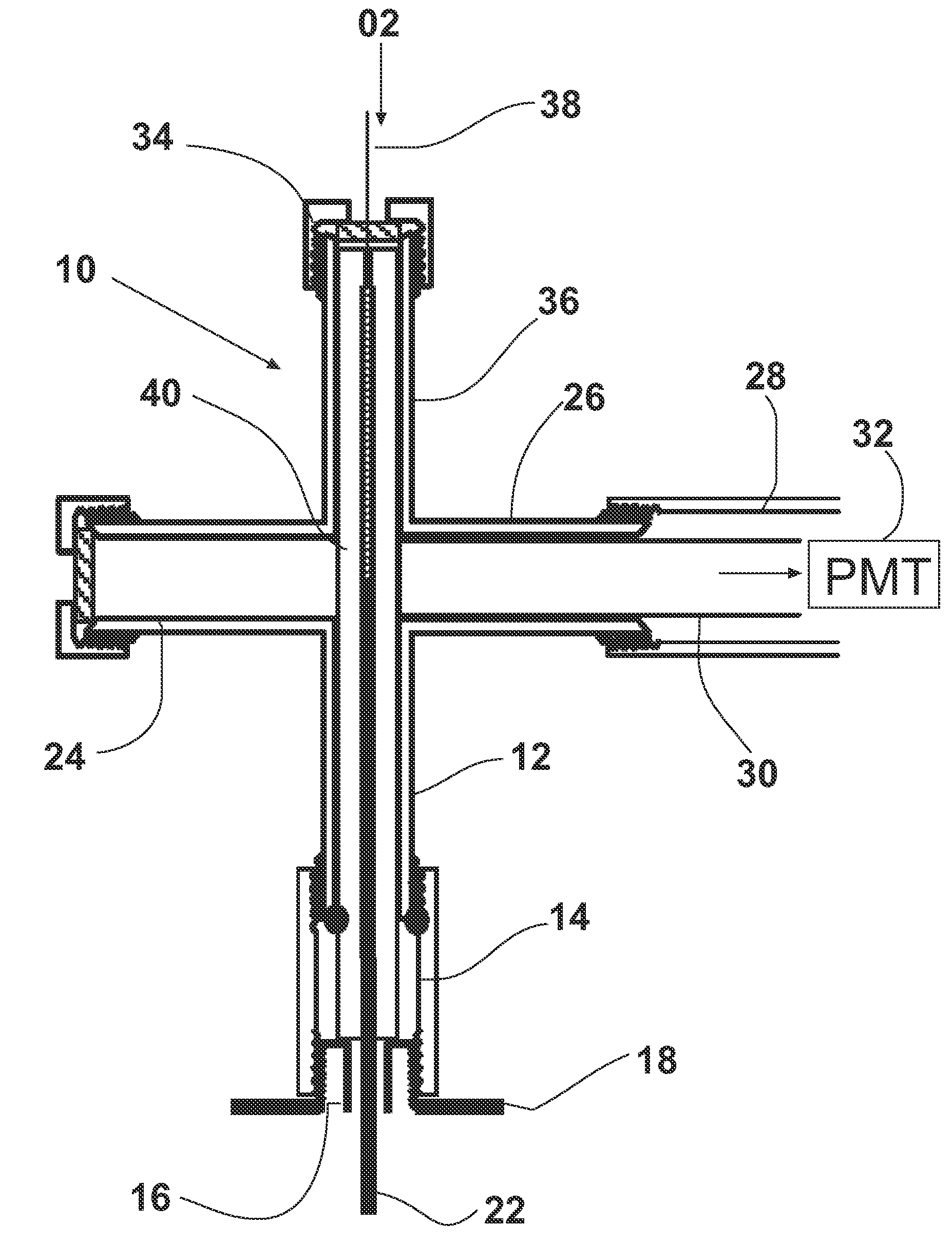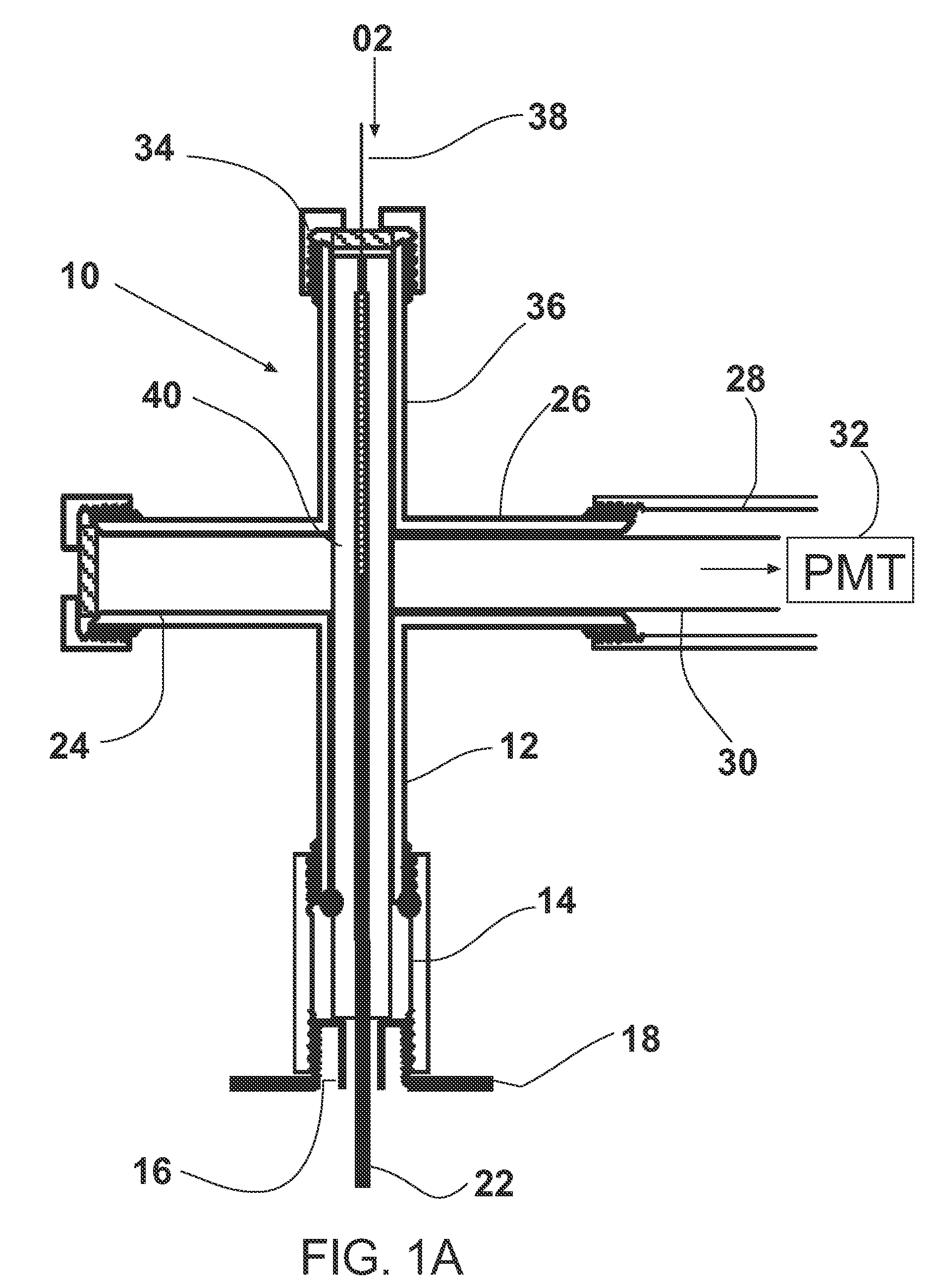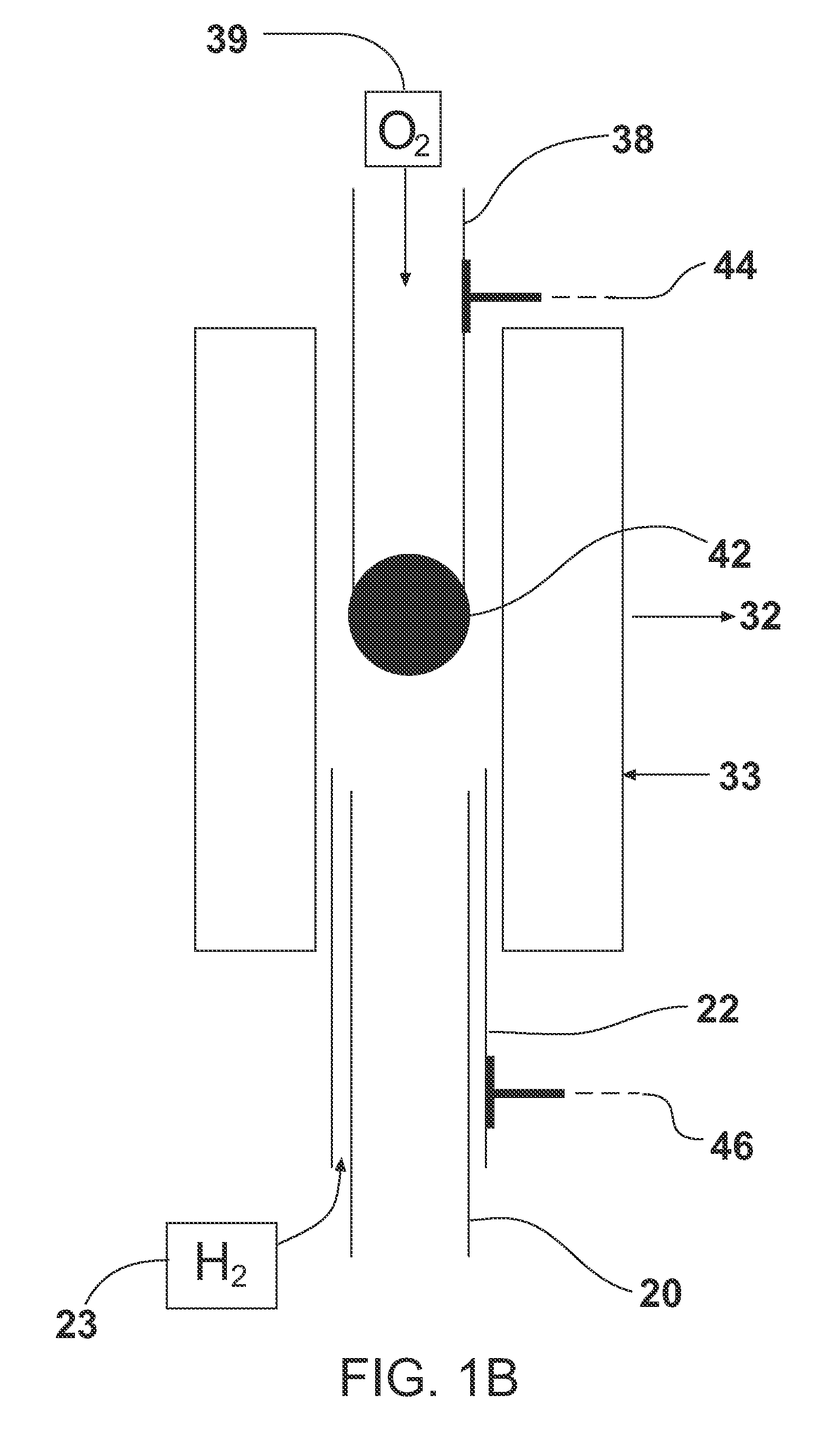Flame detector
a detector and flame technology, applied in the field of flame detectors, can solve the problems of relatively large detection limits of sulfur and phosphorus, relative few have been adapted to micro-analytical formats, etc., and achieve the effects of promoting chemiluminescence and photometric detection, sufficient melting point, and high melting poin
- Summary
- Abstract
- Description
- Claims
- Application Information
AI Technical Summary
Benefits of technology
Problems solved by technology
Method used
Image
Examples
Embodiment Construction
[0018]In this patent document, the word “comprising” does not exclude other elements being present and the use of the indefinite article “a” before an element does not exclude others of the same element being present. A flame photometric detector is considered to be a micro-flame detector, either μFID (ionization detector) or μFPD (photometric detector), if the flame volume, as defined by the visible boundary of the flame, is less than 1 μL (1×10−6 L), which for example is satisfied by spherical flame diameters of less than 1 mm. In particular, the μFPD shown in FIGS. 1A and 1B for which experimental results are described here produces a flame of approximately 30 nL in volume.
[0019]A micro-flame detector arranged for counter-current operation comprises a first tube connected to an oxygen source that provides a flow path for oxygen towards a flame region and a second tube connected to a hydrogen source that provides a flow path for hydrogen towards the flame region, the flows being o...
PUM
 Login to View More
Login to View More Abstract
Description
Claims
Application Information
 Login to View More
Login to View More - R&D
- Intellectual Property
- Life Sciences
- Materials
- Tech Scout
- Unparalleled Data Quality
- Higher Quality Content
- 60% Fewer Hallucinations
Browse by: Latest US Patents, China's latest patents, Technical Efficacy Thesaurus, Application Domain, Technology Topic, Popular Technical Reports.
© 2025 PatSnap. All rights reserved.Legal|Privacy policy|Modern Slavery Act Transparency Statement|Sitemap|About US| Contact US: help@patsnap.com



